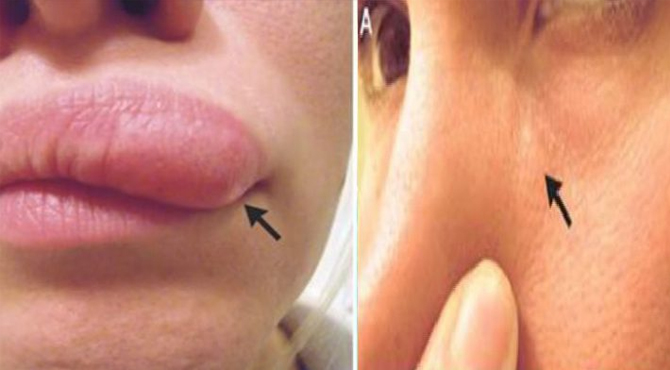Have you ever noticed a change in your appearance? If you have, then you know that it can be worrying. Perhaps, a mole on your arm or leg looks different than it did a while ago. You may go to the dermatologist to make sure you are not developing skin cancer. The same goes for marks and blemishes on your face – however, one woman grew extremely concerned once she realized that the bump near her nose was moving.

When the woman brought her concerns to the doctor, they told her something that she was not prepared to here. Yes, the lump was moving. Yes, it was alive. Yes, it was a parasite, a cousin of the heartworm. The parasite is found not only in Asia and Africa but Europe too.
The woman who caught the disgusting worm was only 32-years-old and could not believe that a critter was living inside the flesh of her face. She contracted it after she was bitten by a mosquito. The parasite is a type of nematode. The mosquito bit her while she was spending time in a rural area outside of Moscow, Russia.
“She had first noted a nodule below her left eye,” Dr. Vladimir Kartashev of Rostov State Medical University in Russia wrote in a letter he later sent to the New England Journal of Medicine. “Five days later, it had moved to above her left eye, and 10 days after that to the upper lip.”
The fact that the parasite was moving around her face made her very worried. I know I’d be concerned if I realized something was squirming around on the inside of my flesh.
“She documented these changes by taking photographs of her face (i.e. ‘selfies’),” Dr. Kartashev said. He wrote to the New England Journal of Medicine along with parasitologist Fernando Simon of the University of Salamanca in Spain. This case truly became a global effort of the minds in medicine.
“These nodules occasionally caused a localized itching and burning sensation, but otherwise she had no symptoms.”
When doctors identified it was a worm, they got to work and pulled it out of her face. That’s when they threw it under the microscope and identified it as Dirofilaria repens, which is a type of nematode that affects animals most often but sometimes gets transferred to people. Usually, it resides inside dogs and cats.
The parasite is a cousin of the heartworm. It can grow to be as long as six inches. Imagine having that living inside your bodily system. Alarming!
Usually, the consequences of removing the parasite are minimal. If a doctor can pull the worm out of the body, then it should be done. However, some people can have extreme reactions to the parasite. It was once noted that a tourist from Germany experienced severe, and life-threatening brain inflammation which is called meningoencephalitis. He had caught the same species of the parasite, which is known to be in India and Sri Lanka.
Meanwhile, the patient in Russia did much better than the German. When the worm was gone, she was better.
“After removal of the worm, the patient had a full recovery,” Dr. Kartashev and Simon wrote to the New England Journal of Medicine.










